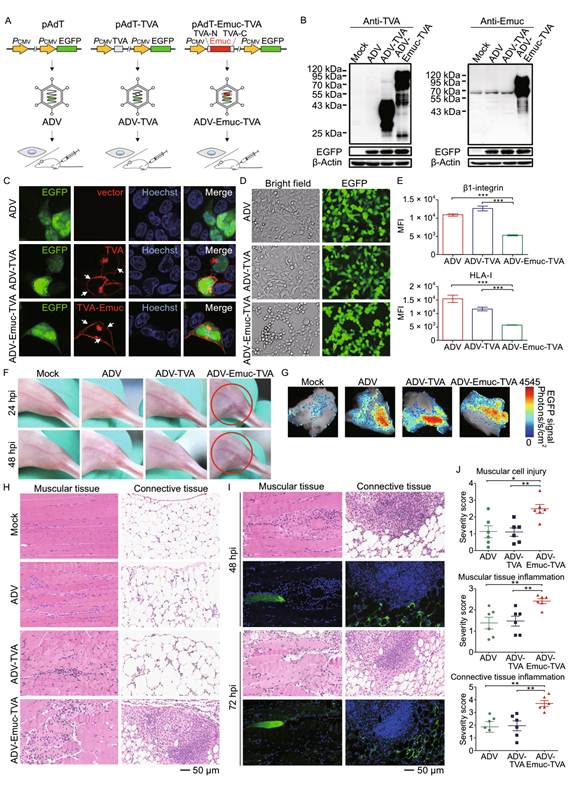Ebola virus (EBOV) is one of the most virulent pathogens to humans. Recently, the largest-ever outbreak of Ebola virus disease (EVD) in West Africa, 2013–2016, resulted in the unprecedented damage to human health and social economy. However, there is currently no licensed vaccine or antiviral available against EVD. Clinically, EBOV infection can result in exaggerated inflammatory responses and multiorgan damage, although the pathogenesis (including the inflammatory pathogenesis) and the viral virulence factor(s) involved in the excessive inflammation induction and viral pathogenicity are largely unclear.
To investigate the potential pathogenic effects of Emuc both in vitro and in vivo, the research group led by Prof. WANG Hualin from Wuhan Institute of Virology of the Chinese Academy of Sciences designed an experiment of adenovirus-mediated gene delivery to cultured cells and mice. The data confirm the effects of Emuc observed in transient transfection assays and suggest that the viral vector efficiently mediated gene expression and functioning by transduction to the cultured cells. Furthermore, the scientists conducted gene delivery of the adenoviral vectors to BALB/c mice for further exploring the effects of Emuc in vivo and observed that Emuc expression specifically caused disease, though temporarily, in the context of local transduction by the replication-deficient adenovirus.
In summary, their study demonstrated that Emuc can not only induce morphological change of adherent cells in vitro but also distinct cell and tissue damage and acute inflammation in mouse muscles, revealing and characterizing the Emuc pathogenicity both in vitro and in vivo. These findings provide direct evidence of the Emuc pathogenicity in vivo for the first time and also critical clues on EBOV pathogenesis and particularly the inflammatory pathogenesis.
The results have been published in Protein & Cell entitled "Ebola virus mucin-like glycoprotein (Emuc) induces remarkable acute inflammation and tissue injury: evidence for Emuc pathogenicity in vivo".
This work was supported by the National Natural Science Foundation of China, the National Basic Research Program (973 Program), the Science and Technology Basic Work Program, the National Key Research and Development Program of China, the strategic priority research program of the Chinese Academy of Sciences and the Hubei Provincial Natural Science Foundation of China.

Adenoviral vector-mediated gene delivery and the potential pathogenicity analyses of EBOV mucin-like glycoprotein (Emuc) in vitroandin vivo. Image by WANG Hualin
Contact:
WANG Hualin
E-mail: h.wang@wh.iov.cn
Wuhan Institute of Virology, Chinese Academy of Sciences, Wuhan 430071, China (http://english.whiov.cas.cn/)